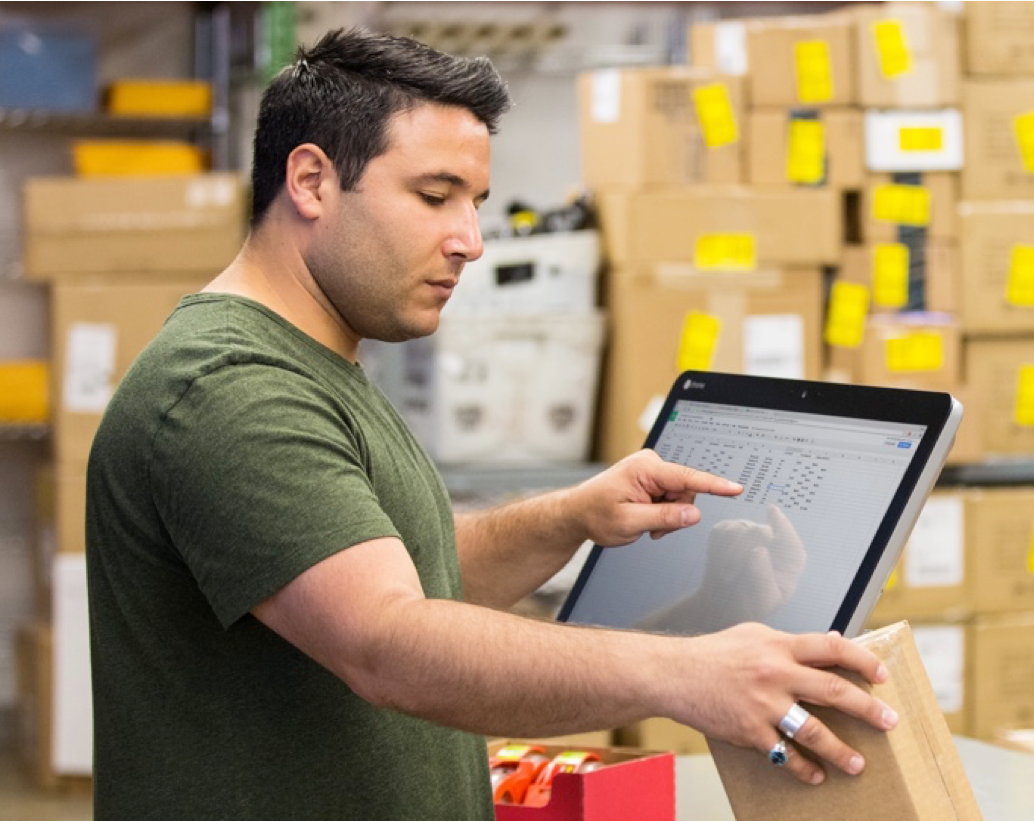It might come as a shock, but consumers increasingly indicate they love interacting with in-store digital signage & screens more than with human beings in shops. With that in mind it’s time for you to rethink your in-store experience and advertising, and embrace today’s digital signage options. In this post we’ll explore what digital signage is and how you can leverage it to increase your sales.
Let’s start with exploring what digital signage is. We all know the traditional in-store advertising and signage. Think banners made from paper, cardboard, plastic or whatever physical material. Stores put them up during sales periods, after which they get discarded or wait in an archive for a few months until the sales start again. Digital signage is the digital version of this more traditional way of doing in-store signage. It includes showing digital content like ads, images, video, text etc. displayed at one or multiple digital displays or screens in your store.
Note here that digital signage is not only of use as a promotional tool for advertisement. It’s also extremely useful for informational purposes, for example within companies as a means of internal communications or in the public sector as a way to inform citizens and members. We’ll focus on in-store digital signage in this post.
The Signage
Digital signage for in-store use can take different forms. Besides the technological variations in display and screen technology like LCD, LED and projection; a major category difference between them is on the one hand the interactive touchscreens and on the other hand the dynamic or static digital screens.
Digital signage is on the rise since the cost of in-store digital displays is getting lower and lower, which increased the ROI of using digital signage and making it more affordable for businesses and stores to invest in this kind of in-store display advertisement.

The Impact
What’s the impact of using digital signage in stores? Businesses that use digital signage report a significant increase of in-store sales. Organisations using Chrome digital signage and kiosks for example see a 3% increase in same-store revenue, according to Forrester.
That’s simply because digital signage attracts the attention of people more than static advertisements do. Your message will be standing out more, grabbing the attention of potential customers.
Boosting Engagement
Digital signage also engages possible buyers more than traditional signage, and that’s even more true for interactive digital signage where potential buyers can interact with. Some use cases of that are for example choosing the variation of your product on an in-store kiosk to see if it’s in stock, or assembling your future car with the options you want on an in-store interactive touchscreen.
Consumer behaviour
The effect of it also lies within the fact that this kind of signage influences the consumer behaviour in general significantly. That’s specially true when you look at touchscreens and self-service kiosks in stores.
More than 60% of consumers say they prefer self-service tools like digital kiosks and 78% of buyers say they would like to see more on-site digital tools to help enhance in-person purchases.

The Benefits
For consumers
The benefits of well set-up digital signage for consumers are thus obvious, as they will be able to make a more considerate choice of the product that they will buy from you. They can get access to self-service transactions and a highly personalised in-store and brand experience. It’s also an easier way for them to ask for assistance, reducing costs, decreasing waiting time, allowing them to immediately see what’s in stock.
In sum, digital signage enhances your customer’s experience with your brand and products. This will boost your sales and brand awareness alike.
For your business
Apart from increasing sales for you as a business, digital signage has other benefits too. It should be easier for you to manage and optimise your promotional content and your device fleet with digital signage. That is, if you choose an intuitive, easy-to-use device management system like Chrome Enterprise in combination with reliable, easy to use devices like Chromebooks or Chrome kiosks for example. This will improve the efficiency of your IT management and ROI even more with high productivity gains for your IT staff.
For your team
If you choose your digital signage solution wisely and run it in the Cloud, like digital signage with Google Chrome Enterprise, your team can benefit from easier access to apps and info, and a faster way to work.
The Conclusion
Digital signage gives businesses a wide array of options to benefit from increased in-store sales, more consumer engagement, an enhanced customer experience and better brand awareness. That is, if you choose an easy-to-manage digital signage platform like Chrome Enterprise in combination with reliable, easy-to-use Chrome devices.
